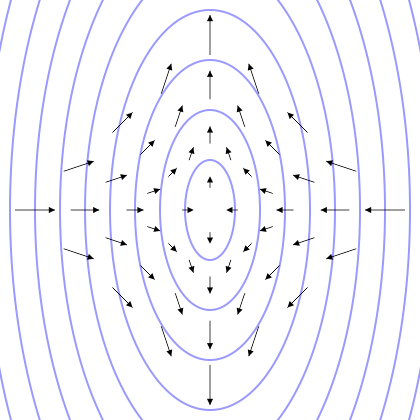Explaining something simply is not easy. Linus Tech Tips has done the best job I have seen of breaking down the computational aspects of how a project like LIGO works. It helps to have a small video production studio to create good visual aids. Physicist like me are most interested in the pure physics-based challenges in such a project. Isolating a signal from all of various types of environmental noise involved in detecting tiny distortions in the distance between points, the space time metric (which is what gravitational waves are.)
Gravitational Waves
So, what is a metric? In non-technical terms it is a measuring stick that gives the distance between objects in space-time.
In short but technical terms. it is a mathematical object which when applied to two other mathematical objects defines the distance between them in the space where all three of these objects exist. In more relevant technical terms it is a solution to the Einstein Field Equations of General Realtivity for a given Stress-Energy tensor. Some of those solutions give us gravitational waves others give us black holes, such as the first exact solution by Karl Schwarzchild.
Other solutions give us gravitational waves created when black holes collide, or neutron stars orbit eachother.

LIGO observed gravitational waves which match with classical general relativity. From solving the equations derived from my model which combines GR with QFT these are what is known as Mathieu functions. They are not sine and cosine waves like light. They are also rank 2 tensor waves. They are fundamentally different from any other wave we observe.

See it's not easy.... this is why videos like the one below are so useful.
Linus Tech Tips, Best Simple Explaination Of The Computing (and pretty good on the physics)
Even though these waves carry a lot of energy gravity is such a weak force that on small length scales other forces dominate it. For example,... Jump off a building. Gravity takes a long time to accelerate you but the electromagnetic forces between atoms stop you in a heartbeat. At the same time as you orbit the earth in a space suit those same electromagnetic forces do little.
Gravity dominates on larger length scales.
This is why in order to detect gravitational waves we need instruments which are both huge in size and able to measure very VERY small changes. At the same time we need to filter out the local noise. We then also need to have at least two of these things. Since if bot instruments see the same wave at the same time, with the proper light speed delay, then we know that we have seen a real event. The more of these detectors we have the better.
It takes serious computation to do this. In fact for a major science project working out the data analysis and computing aspects of it before hand can take years. For example the space based LISA mission is already planning how to analyze data. I and others are already planning various experiments that could probably only be done with an instrument such as LISA working in conjunction with LIGO.
The Future
When will we have a "picture" from these waves? Suffice it to say it will be a very long time before we can have a picture of anything from direct detection of gravitational waves.
The closest we may get is when we are able to see whatever gravitational wave signal was left on the cosmic microwave background radiation. So far it seems that there is too much dust in the way of our being able to get a good look at that with currently deployed technology.
However, when we do we will be effectively using the whole of the sky as a detector for primordial gravitational waves. Waves so old that they could indeed just be highly distorted individual gravitons dating back to the big bang or close to it. Thus, giving us data on the nature of gravity in regimes where quantum effects are important and illuminating theories of inflation and the earliest cosmology of the universe.




Comments